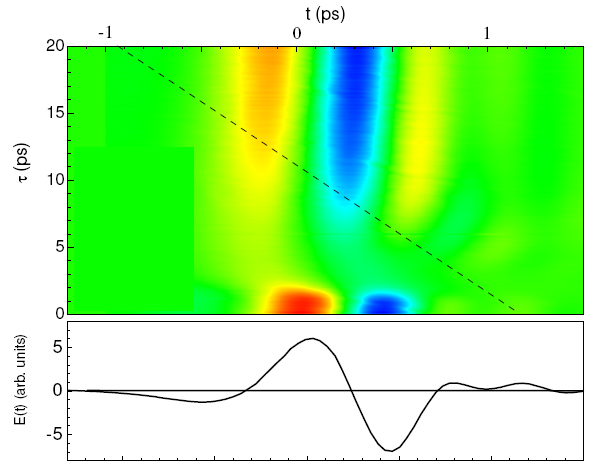|
|
log in | contact us |
|
|
||
|
|||||||||||
|
Light Matters: photon confinement driven light and matter interaction, expansion of photon momentum and light-to-matter transition Arthur Compton's experiment in 1923 marked the first empirical demonstration that photons possess particle-like momentum. Compton's ingenuity rests in recognizing that X-ray photons with wavelengths ranging from mere nanometers to picometers matched the de Broglie wavelength of an electron. This discovery implies that X-ray photons possess momenta that are comparable to that of material-bound electrons. Compared to X-rays, however, the wavelength of free-space visible photons is orders of magnitude longer, resulting in a negligible photon momentum compared to electrons in materials. However, light, when confined to scales below a few nanometers, attains a substantial momentum distribution exceeding that of traditional free-space photons by a factor of a thousand. Following from Heisenberg's uncertainty principle regarding the spatial and momentum degrees of freedom of photons, the electron-photon momentum matching is poised to fundamentally reshape the nature of light-matter interactions. Endowed with both energy and significant momentum, photons can initiate transition pathways in materials, leading to transformative effects. Here are only a few illustrative examples: 1. Photon with energy of visible light and momentum of X-ray fundamentally reshapes optical transitions in materials traditionally deemed momentum-forbidden, such as indirect semiconductors. Such "new" photon should boosts optical transition rate in indirect semiconductors, e.g. silicon by up to four orders of magnitude. Effectively, it converts bulk semiconductor from indorect to direct, making it to resemble a black body absorber across 3 spectral octaves. This marks a new era where intrinsic optical properties of materials can be altered via light conditioning and without material modification. 2. Embracing the concept of optical antennas, when light is confined within nanoscale inclusions (which can be defects, lattice distortions, voids, dangling bonds), photon momentum becomes pivotal in light-matter interactions within disordered systems – systems that exhibit long-range spatial fluctuations, like glasses. One example, the existence of near-field photon modes with expanded momenta in a semicodnuctor glass provides the necessary momentum to facilitate electronic Raman scattering transitions from trapped states - Urbach bridge or continuum of electornic states withing the forbidden bandgap. The size-dependent closing of the bandgap transforms an amorphous semiconductor into a quasi-metal and enable the observation of previously dark, indirect optical transitions. 3. Similar to the Compton effect, we demonstrate that visible light confined to the nanoscale can induce a similar optical interaction in glass - Compton effect with visible light. Given the direct link between Compton-like optical signals and the degree of disorder, the findings pave the way for expanding conventional optical spectroscopy for both chemical (energy) and structural (momentum) studies. 4. The physics and properties of confined photons naturally lead us to reconsider David Bohm's suggestion that matter is 'frozen light.' This raises the intriguing question: can matter be made out of light? While the traditional answer is that it cannot, as photons are conventionally perceived as traveling fields (forces without a charge to act upon) and matter as charges in motion, the question remains open: Does confined light 'matter'?
|
||||||||||
|
Nonlinear optics and multiphoton processes in semiconductors Identifying strong and fast nonlinearities (both absorption and refraction) for today's photonic applications is an ongoing effort. Materials and devices are typically sought to achieve increasing nonlinear interactions to enhance or enable new photonic effects for generation, detection and manipulation of light. One example of an optical nonlinearity is simultaneous two-photon absorption that occurs in semiconductors, generating a single electron–hole pair in the process. We explore this effect to enable novel chemical sensing and visualization methods and modalities. Inorganic and organic semiconducting systems were historically considered to be excellent candidates for photonic switching because of their relatively large third-order nonlinearities. They have been the subject of extensive studies, both experimental and theoretical in many material-wavelength combinations. However, little attention has been paid to theoretical and experimental predictions for the case where the input wavelengths are vastly different. At the same time, although two-photon processes in a semiconductor are typically weak effects, the rate of absorption increases dramatically when the two photons have very dissimilar wavelengths. A quantum-mechanical model using Keldysh theory successfully predicts the observed scaling relationship between the bandgap, photon energy, and degenerate two-photon absorption (DTA) rate indicating the coefficient increases from zero at the half-bandgap (ħω = Egap/2) to a maximum value at 2/3 of the bandgap. This theory can further be generalized to include the case of non-degenerate two-photon absorption (NTA). Many had assumed that the nonlinear absorption rate depends primarily on the photon energy sum ħω1+ ħω2, and not on the individual scaling factors ħω1,2/Egap. Surprisingly, the nonlinear absorption function exhibits a remarkable singularity when either ħω1,2/Egap becomes small. What many had considered to be the optimal condition for DTA is actually a saddle-point: along the degeneracy line (ħω1/Egap= ħω2/Egap), the absorption is minimum, whereas in the orthogonal direction, it reaches a maximum.
|
||||||||||
|
Excitons at quantum limit This thrust dives into the mechanisms and origins of long-lived optical excitations in semiconducting systems and it explores effects and processes, related to bound states of electron-hole pairs, i.e. excitons. Excitons holds extraordinary properties and potential:
|
||||||||||
 |
Chemical sensitive spectrosopies at low limits Mediation of energy transfer between light and matter by surface plasmon or field enhancement helped overcome many fundamental hurdles in optical spectroscopy and microscopy, most notably, overcome diffraction limits manyfold and probe matter on single molecule level. When motion of chemical bonds within molecules can be observed in real time in the form of vibrational wave packets prepared and interrogated through ultrafast nonlinear spectroscopy, such nonlinear optical measurements are commonly performed on large ensembles of molecules and are limited to the extent that ensemble coherence can be maintained. Surface plasmon mediated signals allow sensitivities required to detect the motion of a single molecule under ambient conditions. In contrast with measurements in ensembles, the vibrational coherence on a single molecule does not undergo pure dephasing. It develops phase fluctuations with characteristic statistics - time evolution of discretely sampled statistical states. From more application perspective, such sensitivity enhancement enables very simple, fast, all-optical concept for live detection of low amounts of molecules that are common to our daily life, hence important from industrial and environmental perspectives (e.g. in situ ammonia monitoring). |
||||||||||
 |
Ultrafast spectroscopy and imaging modalities in THz THz spectral region is of special interest for condensed matter - it is comprised of many molecular signatures, including low-energy thermal rotations, bending and torsions. When used in pulsed regime and in combination with ultrafast optical exciation, this phase-sensitive concept can directly probe the evolution of real and imaginary parts of dielectric function, hence complex optical conductivity. Moreover, many pulse arrnagement enables multi-dimensional correlation type measurements to probe molecular couplings and its harmonicity, as rich 2D-Raman and 2D THz-THz-Raman. |
||||||||||
|
|||||||||||
|
|||||||||||